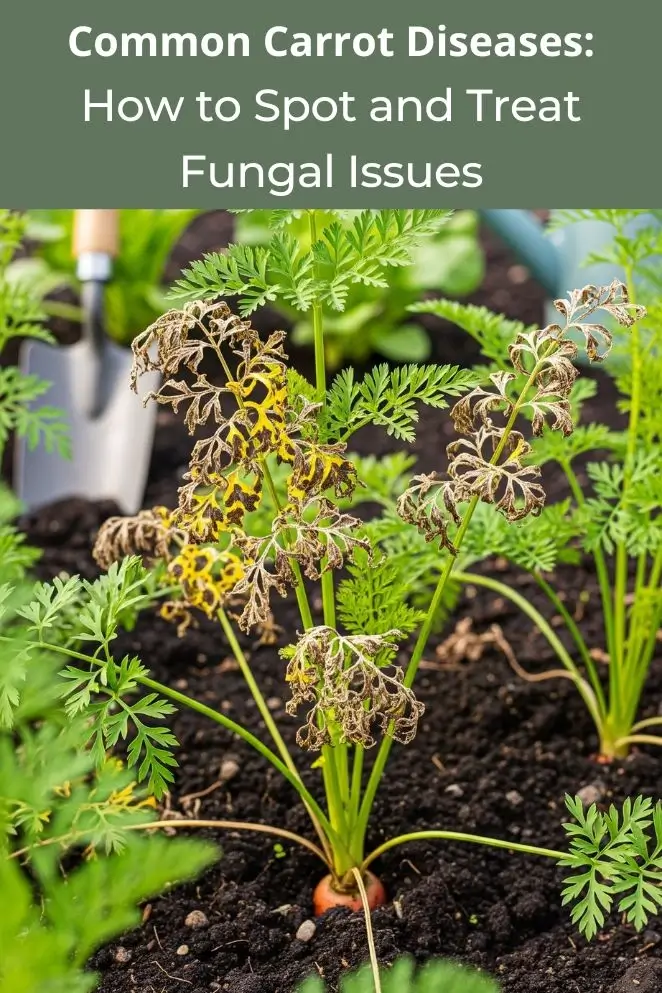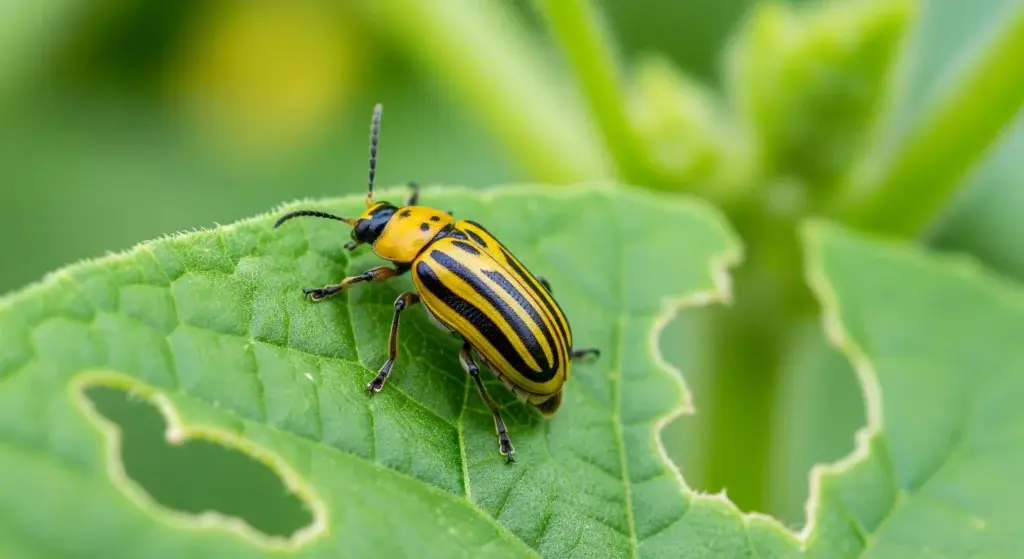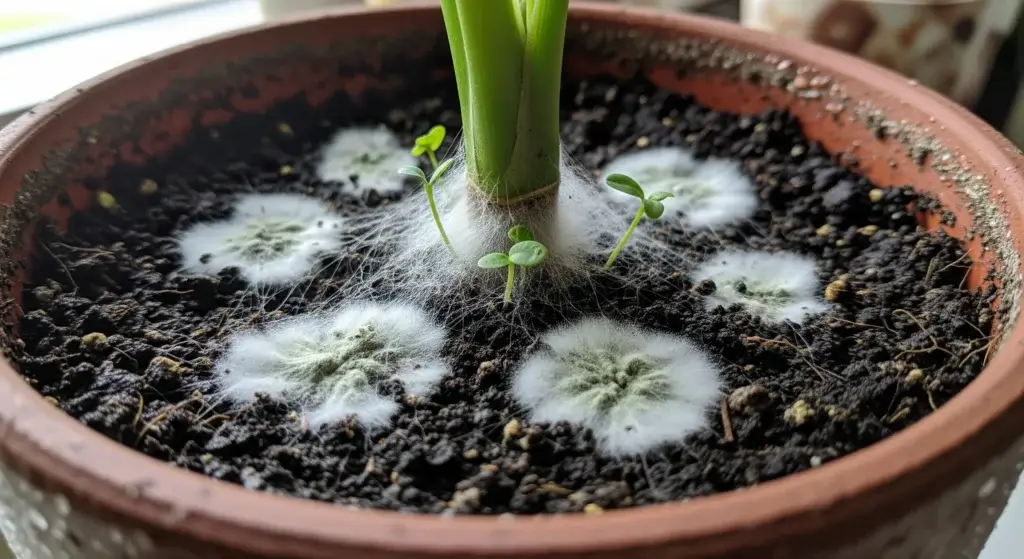Carrots are one of the most popular veggies out there—bright, crunchy, packed with nutrients, and insanely useful in the kitchen.
But they’ve got enemies: fungal diseases.
These can wreck leaves so they can’t photosynthesize or rot roots so the harvest is ruined. Farmers lose millions every year because of this.
The upside? If you know what to look for and stay on top of prevention, you can keep your carrots healthy and thriving.
Major Fungal Diseases of Carrots
Alternaria Leaf Blight (Black Rot)
Identification and Symptoms
Starts as small dark spots on leaf edges that grow into concentric “bullseye” rings — think tiny target stickers on the leaves.
Lesions get water-soaked, then brown/black with yellow halos; older leaves collapse and the tops get brittle, which can wreck mechanical harvests.
Management Strategies
Crop rotation (no carrots for ~2 years), avoidance of overhead watering, and ventilation.
Plant resistant varieties when they are available and spray early with approved fungicides (strobilurins/triazoles) if the disease appears — get it quickly, because infection late is hell.
Cercospora Leaf Blight
Identification and Symptoms
Looks similar to Alternaria but with many small spots that have grayish centers and dark borders; in humid weather infected areas can look fuzzy from heavy spore production.
It usually starts at leaf tips and margins and can cause serious defoliation in warm, wet climates.
Management Strategies
Same playbook as Alternaria: reduce leaf wetness, enhance aeration, rotation, use resistant types if available, and start fungicide programs early (most of the strobilurins manage both diseases).
Sclerotinia Rot (White Mold / Cottony Rot)
Identification and Symptoms
This one’s gross and obvious: soft, water-soaked roots covered in white, cottony mycelium and later hard black sclerotia — like the fungus left behind its little coal nuggets.
Above ground you’ll see wilting, but by then the roots are usually toast.
Management Strategies
Long game required: rotation with non-susceptible crops (grass/cereal), deep plowing to bury sclerotia, subsurface drip to lower humidity, prune leaves to improve aeration, and pre-emptive fungicide soil treatment in high-risk areas.
No carrot variety is entirely resistant, so cultural controls are of greatest value.
Powdery Mildew
Identification and Symptoms
Shows up as white, powdery patches on leaf surfaces — imagine someone lightly dusted flour over the leaves.
It favors moderate temps and high humidity but can happen in drier conditions than other leaf diseases.
Management Strategies
Space plants, control weeds, avoid too much nitrogen, and improve air movement.
Organic growers use sulfur sprays; conventional growers can use strobilurins and other labeled fungicides as part of an integrated plan.

Root Rot Diseases
Black Root Rot
Envision black root rot as the sneaky enemy that lurks in soggy, poorly drained soil.
It infects unsightly black lesions on carrot roots—just on the surface in some, deep inside others.
Even after being harvested, it continues to be a nemesis in storage. Growers detest it because carrots become nasty and rot prematurely.
The solution? Keep soils well draining, crop rotate, and handle roots kindly so you are not providing the fungus with an easy route of entry.
Rhizoctonia Root Rot
Rhizoctonia is the all-round troublemaker—it messes with carrots from seedling to storage.
Early on, it can stop seedlings from even popping up. Later, it causes reddish-brown wounds on roots that can wrap all the way around.
And if that’s not enough, in storage it turns into a dry, firm rot that just keeps spreading.
The best defense is healthy soil practices and watching conditions that let it thrive.
Integrated Disease Management Strategies
Cultural Practices
- Crop Rotation: Don’t plant carrots in the same spot every year—it’s like inviting the same villains back to the party.
- Field Prep: Carrots hate soggy soil. Pick fields with good drainage and airflow. Deep plowing and adding organic matter makes soil healthier and buries trouble-making fungi.
- Water Management: Think “hydrate, don’t drown.” Drip irrigation keeps leaves dry and fungi sad. If you use sprinklers, do it in the morning so leaves dry fast.
- Sanitation: Clean up your mess. Leftover carrot junk is like a fungus Airbnb. Burn it, compost it, whatever—just don’t leave it around.
Resistant Varieties
Some carrot types are bred to handle diseases better.
They’re not invincible, but they save you stress and chemicals. Pick varieties that match the threats in your area—local experts or seed suppliers can help you choose.
Chemical Control
- Fungicide Programs: Use sprays smartly, not like random bug spray on a cockroach. Strobilurins cover a lot (leaf and root diseases).
- Timing: Don’t wait until your carrots look like they’re on life support. Spray preventively when conditions (humid, warm, soggy) scream “fungus party.”
- Resistance Management: Fungus evolves like TikTok trends—fast. Rotate fungicides with different modes of action, don’t spam the same one.
Monitoring and Early Detection
Scouting Programs
Think of scouting like being a plant detective. Start checking your carrots as soon as they pop up and keep going all season.
Focus on “trouble zones” like field edges or soggy spots where fungi love to crash.
Take notes—track what you see, how bad it is, and what the weather’s been like.
Those records are like cheat codes for beating future outbreaks.
Environmental Monitoring
Weather = fungi’s hype man. Warm, wet, and humid? That’s their party.
Keep tabs on temp, rain, humidity, and leaf wetness.
Lots of areas even have disease forecast tools you can use (like a weather app but for plant drama).
Use this intel to spray preventively before things get ugly and tweak your watering schedule so you’re not fueling a fungus rave.
Storage Disease Management
Carrots don’t stop fighting off diseases just because you yanked them out of the ground—fungi love hanging around in storage, waiting to ruin your hard work.
The trick? Handle them like fragile treasure from the very start.
Harvest Practices
Pick carrots on dry days if you can—muddy conditions just spread more junk onto the roots.
Be gentle; every bruise or cut is like opening the door for fungi to move in.
Once they’re out, cool them down fast (ever notice how veggies wilt if left in a hot car?).
And wash them in clean water with the right sanitizers so they’re not chilling with hidden pathogens.
Storage Conditions
Carrots like it chilly and humid—think fridge-on-steroids cold: 32–35°F with 95–98% humidity.
That combo keeps them crisp but doesn’t let them dry out. Good airflow is key too; without it, you’re basically building a sweaty locker room for fungi.
Post-Harvest Treatments
A quick dip in a diluted bleach solution (2–5%) works like a disinfecting shower—wiping out surface nasties before they spread.
Some big-time growers even use special fungicides just for storage, but always stick to safe, approved products.
Conclusion
The maintenance of carrots requires a complete set of tools. Why is one trick worse than the other?
By combining intelligent farming techniques, durable cultivars, and precisely selected pesticides you’ve got yourself up to scratch….
The real MVP move? Catching problems early. Experiencing clues in the scouting field is similar to being a detective, as they can detect any potential danger before it escalates.
This approach allows for quick identification and early detection. It is always cheaper to prevent a disaster than to attempt to fix it later on.
Refuse to panic when you have a system in place as there are always new diseases and potential cures available.
Maintain a curious attitude, gain new knowledge and adjust your approach accordingly.



